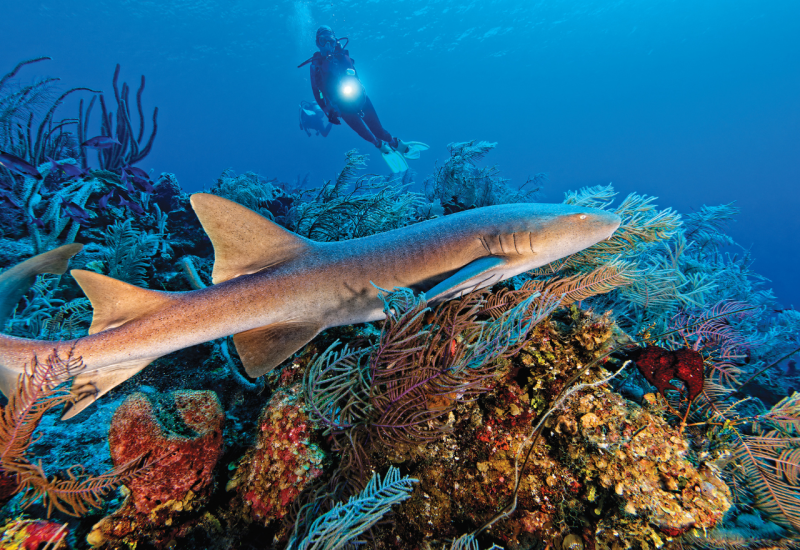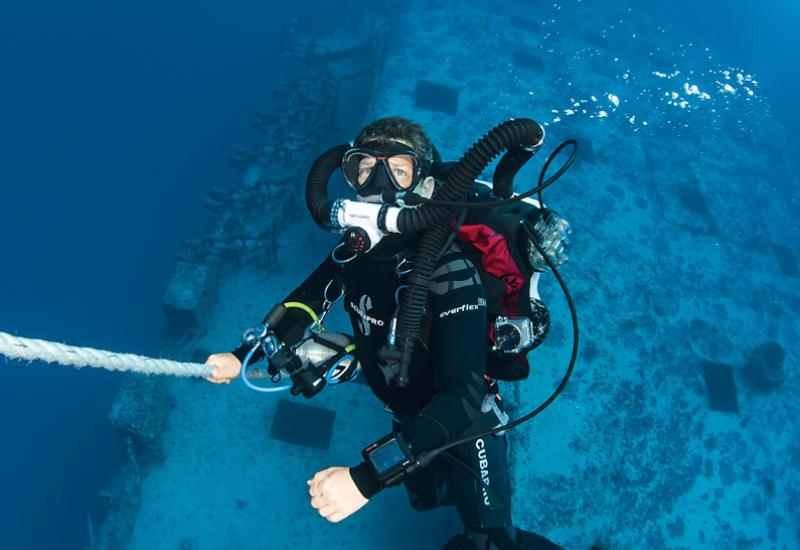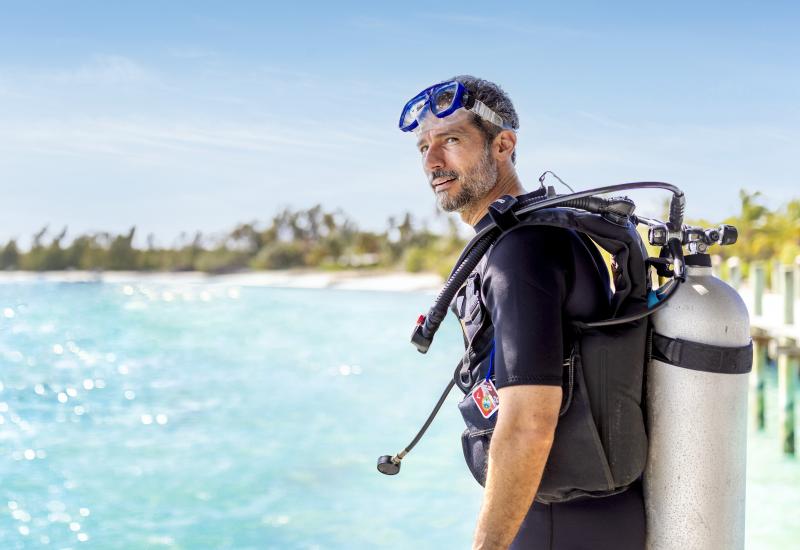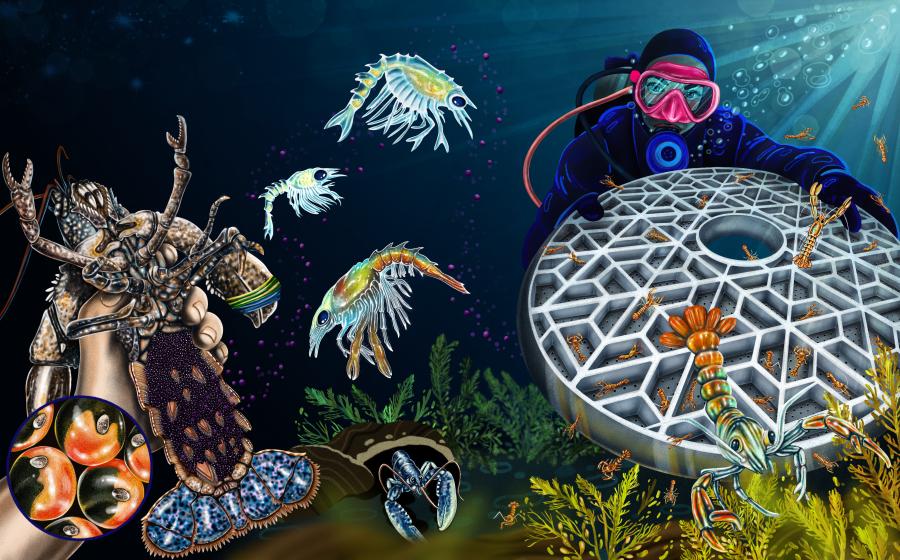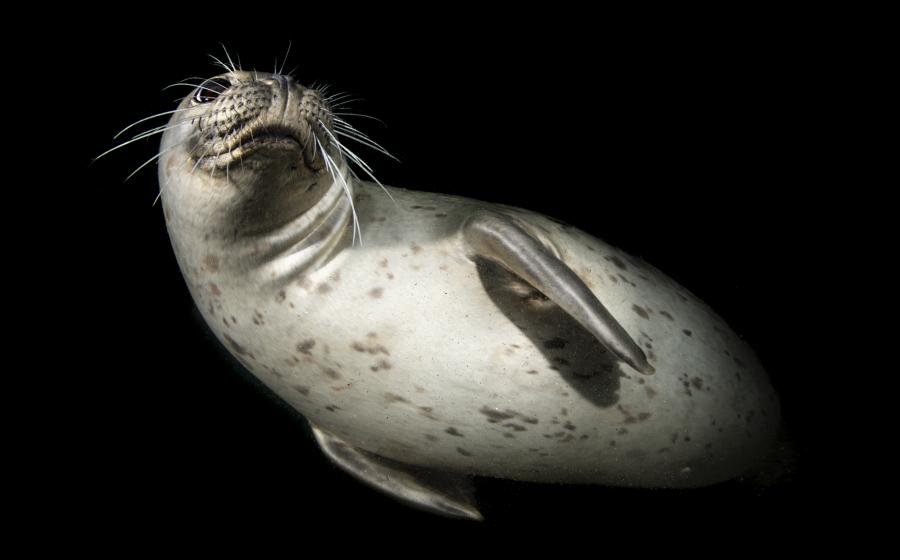Calculating SCR (Surface Consumption Rate)
When you know your SCR in cubic feet per minute, it's possible to estimate how long a tank will last you at a given depth.
Many divers routinely check their surface consumption rate (SCR) in psi, which is a good measure of breathing efficiency. However, if you calculate your SCR in cubic feet per minute (cu. ft./min.), you'll have a functional number that will allow you to estimate how long a given cylinder of air will last you at any depth.
Getting Started
As with any SCR calculation, you first need to establish a base consumption figure by conducting a test run. Thirty-three feet for 10 minutes is a good choice and makes the calculations a little easier. Watch your submersible pressure gauge, compass, depth gauge and watch or timer. Better yet, use a gas-integrated dive computer and all but the compass will be contained in one instrument. Kick out five minutes and back five minutes at roughly your normal dive pace. This is also a good time to check your navigation skills.
Math Class
Now you're ready to convert psi to cubic feet. The SCR equation can be expressed as:
SCR = (1-P2/P1) x Vf/Aa/Tm
Where
P1 = pressure in psi at beginning of test dive
P2 = pressure in psi at end of test dive
Vf = actual volume of air in tank in cu. ft.
Aa = pressure in absolute atmospheres
Tm = time of dive in minutes
Step 1 -- Establish your Vf, the volume of air in cubic feet that you started with. This is easy if you know the volume of your tank and it is full (see "Tank Chart"). Keep in mind, most standard aluminum 80 tanks hold 77.4 cu. ft. at 3000 psi. To find the actual volume of a less-than-full tank, divide the actual pressure by the full pressure and multiply by the volume in cubic feet of a full tank.
| EXAMPLE What is the beginning volume of a standard aluminum 80 at 2800 psi? > (2800 / 3000) x 77 = 72 cu. ft. |
Step 2 -- Calculate the cubic feet of air used during your test run. The process is similar to Step 1: Divide the ending pressure by the beginning pressure and multiply your answer by the starting tank volume in cubic feet. Subtract that figure from the starting volume to get the volume of air used during the dive.
| EXAMPLE How many cubic feet of air did you use if you began your test dive with 2800 psi and finished with 2300 psi? > (2300 / 2800) x 72 = .82 x 72 = 59 cu. ft. remaining 72 - 59 = 13 cu. ft. used during the dive |
Step 3 -- Convert to cubic feet per minute for your SCR.
| EXAMPLE Your test dive was 10 minutes at 33 feet. Since 33 feet is two atmospheres of pressure, divide cubic feet of air used by two, and then divide that by the number of minutes. You end up with your SCR in cubic feet per minute (cu. ft./min.). > (13 / 2) / 10 = 6.5 / 10 = .65 cu. ft./min. at the surface |
So What? The Practical Application
Congrats, you passed math class. What do you do with this knowledge? Now that you know your SCR, it is possible to estimate the length of time a tank will last you at a given depth.
Step 1 -- Divide the volume of any tank by your personal SCR:
**
77 cu. ft. / .65 cu. ft./min. = 118 minutes
**
Step 2 -- Divide by depth in atmospheres:
118 min. / 3 Aa (rounded) = 39 minutes
(assuming a 60-foot dive)
You now know that on a dive to 60 feet, a full aluminum 80 cylinder would last you about 39 minutes. Since you must allow time for descent, ascent, a safety stop and a reserve of 300 to 500 psi, a bottom time of no more than 30 minutes would be practical for you. Such specific information can help you more accurately plan your dives, decompression stops, and select a dive buddy, if you dive with one.
When you know your SCR in cubic feet per minute, it's possible to estimate how long a tank will last you at a given depth.
Many divers routinely check their surface consumption rate (SCR) in psi, which is a good measure of breathing efficiency. However, if you calculate your SCR in cubic feet per minute (cu. ft./min.), you'll have a functional number that will allow you to estimate how long a given cylinder of air will last you at any depth.
Getting Started
As with any SCR calculation, you first need to establish a base consumption figure by conducting a test run. Thirty-three feet for 10 minutes is a good choice and makes the calculations a little easier. Watch your submersible pressure gauge, compass, depth gauge and watch or timer. Better yet, use a gas-integrated dive computer and all but the compass will be contained in one instrument. Kick out five minutes and back five minutes at roughly your normal dive pace. This is also a good time to check your navigation skills.
Math Class
Now you're ready to convert psi to cubic feet. The SCR equation can be expressed as:
SCR = (1-P2/P1) x Vf/Aa/Tm
Where
P1 = pressure in psi at beginning of test dive
P2 = pressure in psi at end of test dive
Vf = actual volume of air in tank in cu. ft.
Aa = pressure in absolute atmospheres
Tm = time of dive in minutes
Step 1 -- Establish your Vf, the volume of air in cubic feet that you started with. This is easy if you know the volume of your tank and it is full (see "Tank Chart"). Keep in mind, most standard aluminum 80 tanks hold 77.4 cu. ft. at 3000 psi. To find the actual volume of a less-than-full tank, divide the actual pressure by the full pressure and multiply by the volume in cubic feet of a full tank.
||| |---|---|
|| **EXAMPLE** What is the beginning volume of a standard aluminum 80 at 2800 psi? **> (2800 / 3000) x 77 = 72 cu. ft.** | |
Step 2 -- Calculate the cubic feet of air used during your test run. The process is similar to Step 1: Divide the ending pressure by the beginning pressure and multiply your answer by the starting tank volume in cubic feet. Subtract that figure from the starting volume to get the volume of air used during the dive.
||| |---|---|
|| **EXAMPLE** How many cubic feet of air did you use if you began your test dive with 2800 psi and finished with 2300 psi? **> (2300 / 2800) x 72 = .82 x 72 = 59 cu. ft. remaining** 72 - 59 = 13 cu. ft. used during the dive | |
Step 3 -- Convert to cubic feet per minute for your SCR.
||| |---|---|
|| **EXAMPLE** Your test dive was 10 minutes at 33 feet. Since 33 feet is two atmospheres of pressure, divide cubic feet of air used by two, and then divide that by the number of minutes. You end up with your SCR in cubic feet per minute (cu. ft./min.). **> (13 / 2) / 10 = 6.5 / 10 = .65 cu. ft./min. at the surface** | |
So What? The Practical Application
Congrats, you passed math class. What do you do with this knowledge? Now that you know your SCR, it is possible to estimate the length of time a tank will last you at a given depth.
Step 1 -- Divide the volume of any tank by your personal SCR:
**
77 cu. ft. / .65 cu. ft./min. = 118 minutes
**
Step 2 -- Divide by depth in atmospheres:
118 min. / 3 Aa (rounded) = 39 minutes
(assuming a 60-foot dive)
You now know that on a dive to 60 feet, a full aluminum 80 cylinder would last you about 39 minutes. Since you must allow time for descent, ascent, a safety stop and a reserve of 300 to 500 psi, a bottom time of no more than 30 minutes would be practical for you. Such specific information can help you more accurately plan your dives, decompression stops, and select a dive buddy, if you dive with one.


